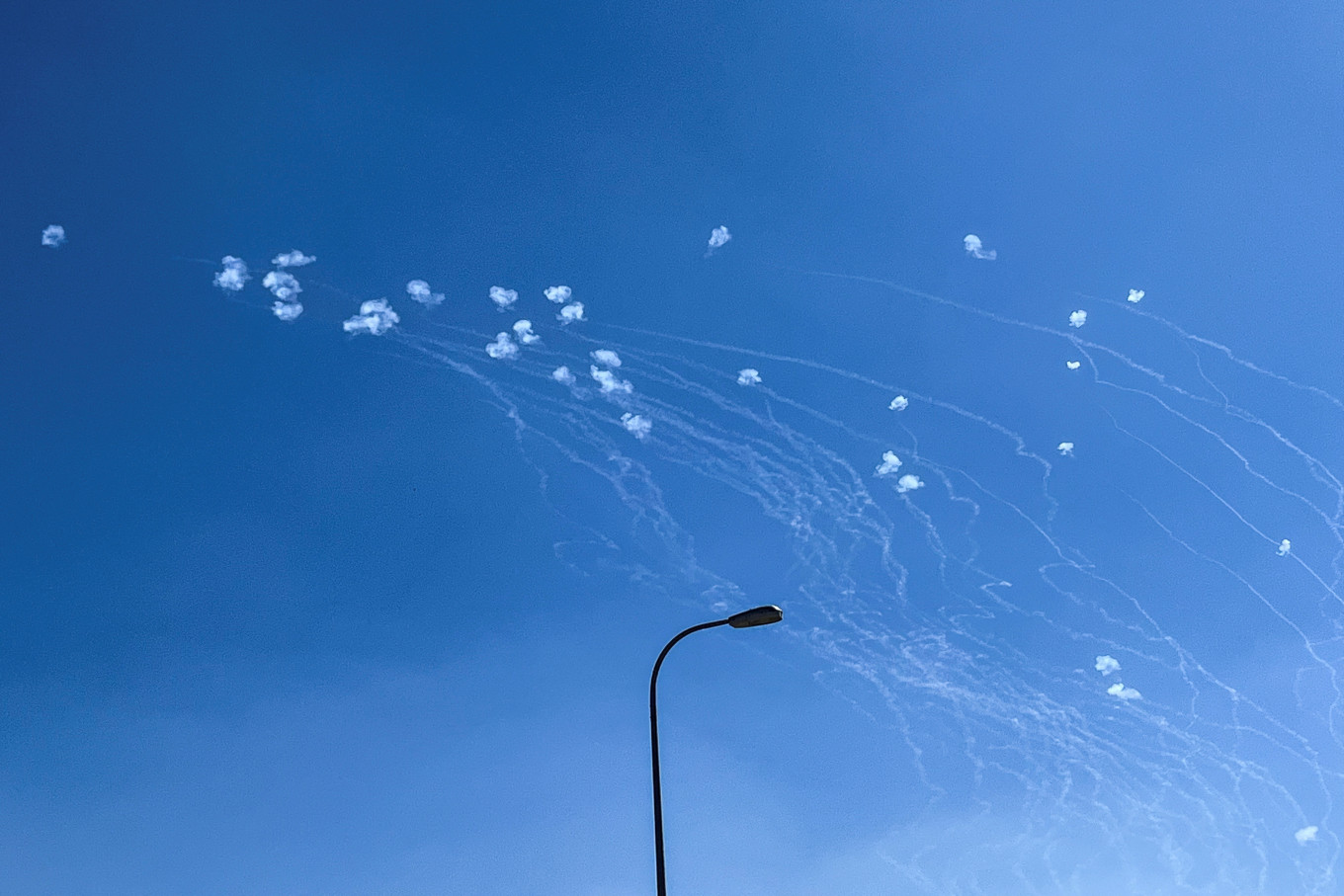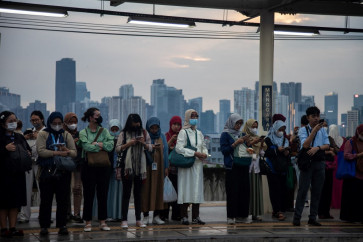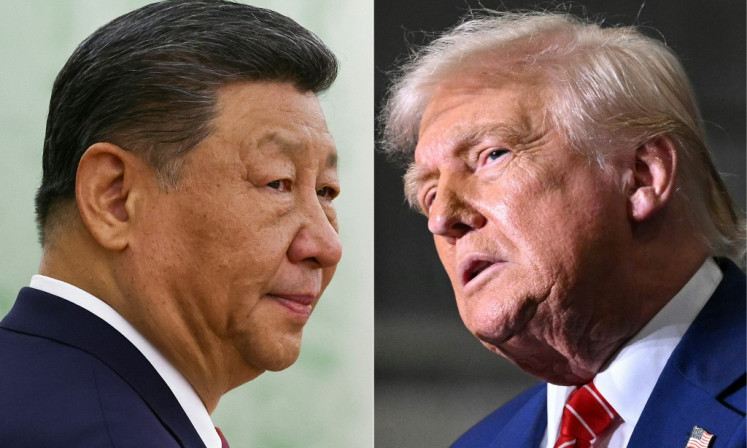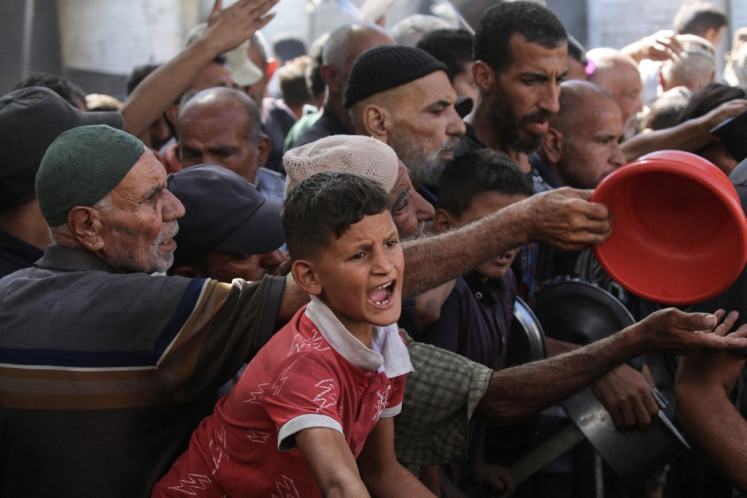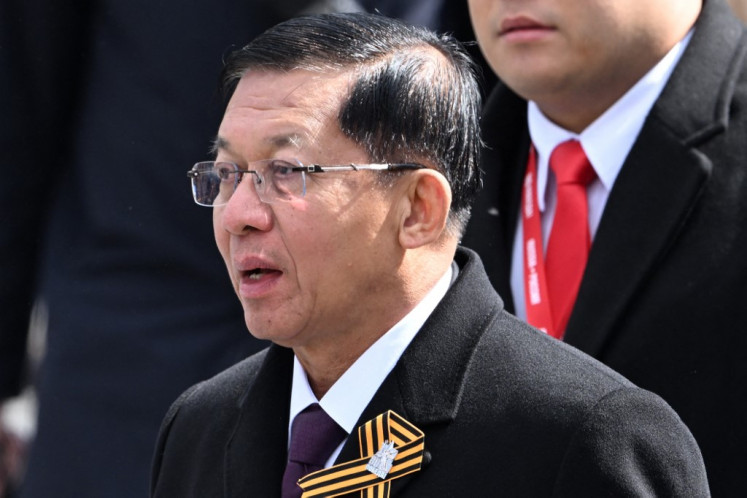Popular Reads
Top Results
Can't find what you're looking for?
View all search resultsPopular Reads
Top Results
Can't find what you're looking for?
View all search resultsWhat are Israel's Iron Dome, Slings and Arrows used against rockets and missiles?
The Israeli army said it intercepted a large number of the incoming missiles -- 180 according to the army, while Iran said it had launched 200.
Change text size
Gift Premium Articles
to Anyone
I
srael's Iron Dome air defence system is just one part of a multi-layered missile shield that the state has deployed and which again proved its worth against Iran's missile barrage Tuesday.
The Israeli army said it intercepted a large number of the incoming missiles -- 180 according to the army, while Iran said it had launched 200.
Where Iron Dome offers short-range protection against missiles and rockets, its counterparts David's Sling and successive generations of Arrow missiles are Israeli-American tech built on billions in US aid to halt ballistic missiles.
Iron Dome
Thousands of rockets fired by Hezbollah and Hamas have been intercepted by Iron Dome since it entered service in 2011.
Developer Rafael says the system can stop up to 90 percent of incoming projectiles.
Iron Dome can bring down rockets and missiles over a range of 70 kilometres (43 miles).
It saw action in both of Iran's attacks on Israel this year, on April 13 and on Tuesday.
Israel began work on Iron Dome following its 2006 war in Lebanon, with the first battery deployed in March 2011 in Beersheba, 40 kilometres (25 miles) from Gaza.
Nine more of the mobile units have since been deployed around Israeli territory, according to a US Senate report from March last year.
Each battery is made up of three launchers, each stocked with 20 interceptor missiles.
They are launched only if the battery's radar detector and computer calculate that an enemy missile is headed for an inhabited or strategic zone.
While Israel developed and began building Iron Dome, it struck a production deal with the United States in 2014 that led to a 2020 joint venture between Rafael and US-based Raytheon (now RTX).
The US military acquired several Iron Dome batteries in 2019.
David's Sling
Named after the Biblical story in which shepherd David defeats the giant warrior Goliath armed only with a sling, the second layer of Israel's defence targets long-range rockets and cruise missiles at ranges of between 40 and 300 kilometres.
Each launcher holds up to 12 missiles designed to destroy targets by colliding with them, rather than detonating an explosive charge -- known in military jargon as a "hittile".
Developed jointly by Rafael and Raytheon and operational since 2017, two David's Sling batteries cover all of Israel's territory.
Finland said in November that it would acquire a David's Sling system for 317 million euros ($350 million).
Arrow
With technological roots going back to the US Strategic Defence Initiative launched by President Ronald Reagan in the 1980s, Arrow II and III were developed jointly by US-based Boeing and Israel Aerospace Industries (IAI).
Arrow II, whose first successful interception test came in August 2020, has a range of up to 500km (310 miles).
With a range estimated at 2,400 km, Arrow III goes further by targeting incoming ballistic missiles outside Earth's atmosphere, more than 100 km above the surface.
Israel tested Arrow III successfully in January 2022.
Both systems were fired on Tuesday against Iran's missiles, with IAI claiming success.
Germany said in September 2023 that it would buy Arrow III systems worth an estimated $3.5 billion as part of its European Sky Shield Initiative (ESSI).

